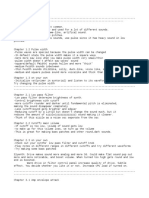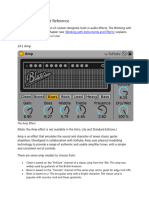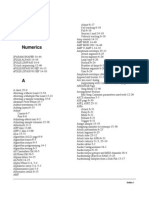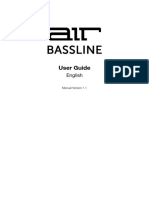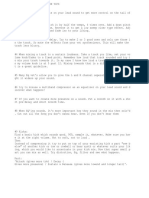0% found this document useful (0 votes)
69 views1 pageSyntorial Notes
The document summarizes chapters 5 and 6 from Syntorial Notes. Chapter 5 covers filter envelopes including how the attack, release and cutoff settings impact the sound. Chapter 6 discusses echo and delay effects, including delay time, feedback, mix and how release impacts the echoes. It also provides tips for using delays.
Uploaded by
Mack BaughCopyright
© © All Rights Reserved
We take content rights seriously. If you suspect this is your content, claim it here.
Available Formats
Download as DOCX, PDF, TXT or read online on Scribd
0% found this document useful (0 votes)
69 views1 pageSyntorial Notes
The document summarizes chapters 5 and 6 from Syntorial Notes. Chapter 5 covers filter envelopes including how the attack, release and cutoff settings impact the sound. Chapter 6 discusses echo and delay effects, including delay time, feedback, mix and how release impacts the echoes. It also provides tips for using delays.
Uploaded by
Mack BaughCopyright
© © All Rights Reserved
We take content rights seriously. If you suspect this is your content, claim it here.
Available Formats
Download as DOCX, PDF, TXT or read online on Scribd
/ 1


